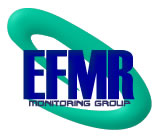Date: July 24, 2014
FOR IMMEDIATE RELEASE
Fukushima
Daiichi Nuclear Accident Underscores Need to Actively Seek Out and Act
on New Information About Nuclear Plant Hazards, Says New NAS Report
WASHINGTON – A new congressionally mandated report
from the National Academy of Sciences concludes that the overarching
lesson learned from the 2011 Fukushima Daiichi nuclear accident is that
nuclear plant licensees and their regulators must actively seek out and
act on new information about hazards with the potential to affect the
safety of nuclear plants. The committee that wrote the report examined
the causes of the Japan accident and identified findings and
recommendations for improving nuclear plant safety and offsite emergency
responses to nuclear plant accidents in the U.S.
The
accident at the Fukushima Daiichi plant was initiated by the Great East
Japan Earthquake and tsunami on March 11, 2011. The earthquake knocked
out offsite AC power to the plant, and the tsunami inundated portions of
the plant site. Flooding of critical equipment resulted in the
extended loss of onsite power with the consequent loss of reactor
monitoring, control, and cooling functions in multiple units. Three
reactors -- Units 1, 2, and 3 -- sustained severe core damage, and three
reactor buildings -- Units 1, 3, and 4 -- were damaged by hydrogen
explosions. Offsite releases of radioactive materials contaminated land
in Fukushima and several neighboring prefectures, prompting widespread
evacuations, distress among the population, large economic losses, and
the eventual shutdown of all nuclear power plants in Japan.
Read Article
On July 21, 2014, the Waste Confidence Directorate provided the Commission with the draft final documents for the Continued Storage rulemaking (formerly Waste Confidence). These documents are called “draft” final documents because until the Commission reviews and approves them for publication, they are not truly final—the Commission could approve, modify, or disapprove these documents. These documents are not for public comment, however, the NRC is releasing them to the public in accordance with Commission procedures. The draft final rulemaking documents can be accessed in the Agencywide Documents Access Management System (ADAMS):
· SECY-14-0072: Final Rule: Continued Storage of Spent Nuclear Fuel (RIN 3150-AJ20) – ADAMS Accession No. ML14177A474 à http://pbadupws.nrc.gov/docs/ML1417/ML14177A474.pdf
· Final Rule: Continued Storage of Spent Nuclear Fuel (Federal Register notice) – ADAMS Accession No. ML14177A477 à http://pbadupws.nrc.gov/docs/ML1417/ML14177A477.pdf
· NUREG-2157, Generic Environmental Impact Statement for Continued Storage of Spent Nuclear Fuel – Final Report – ADAMS Accession No. ML14188B749 à http://pbadupws.nrc.gov/docs/ML1418/ML14188B749.pdf
All three documents can also be accessed on the Waste Confidence website homepage:
http://www.nrc.gov/waste/spent-fuel-storage/wcd.html
Please note that in response to public comments, the NRC staff is proposing to change the title of the rulemaking from Waste Confidence to Continued Storage. For an explanation of this proposed change, please see Section IV, Issue 4, in the draft final Federal Register notice, or Section D.2.1.4 in Appendix D of the draft final NUREG-2157. Similarly, we direct you to Appendix D for information about how the staff proposes to respond to comments received on the proposed rule and draft generic environmental impact statement.
These documents are not for public comment.
Thank you,
Staff of the Nuclear Regulatory Commission
Waste Confidence Directorate
